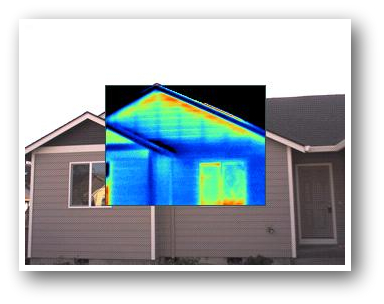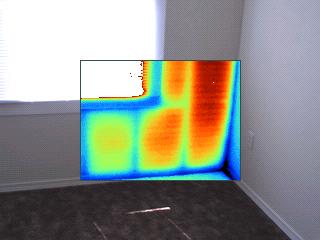
Here you can clearly see the wooden lath and a lack of insulation in this 1930 vintage home 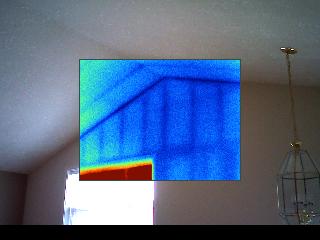 in Salem, Oregon.
in Salem, Oregon.
This is a typical picture showing 16" stud spacing and insulated walls.
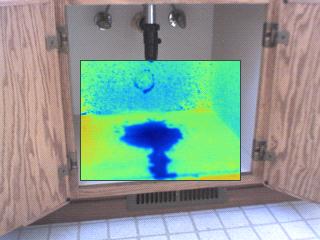
This is a typical waste line leak under a bathroom sink. A leak like this can be very conducive for mold growth. This is a very common item on an inspection.
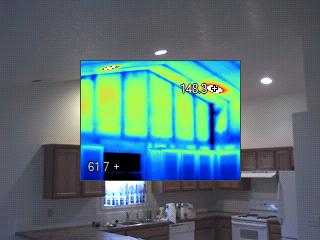
An interesting picture showing the temperature ranges on a home in Polk county. The light bulb is the hottest and the window is the coolest. This is typical.
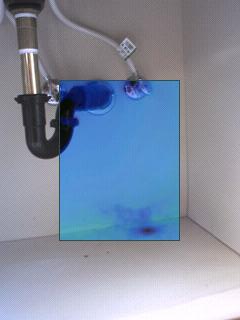
Here is a small leak in the cold water supply valve under the bath sink. This thermal image is partially fused with the visual light image. This picture was taken on a recent home inspection in Silverton, Oregon.
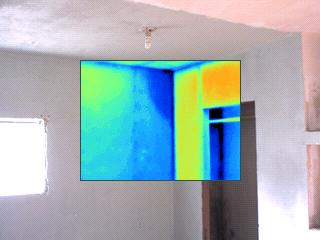
The dark blue area in the corner of this room is a current moisture from a roof leak. The room had just been painted and there were no visual indications of a leak.
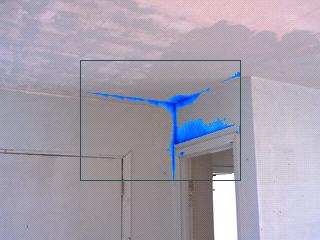
This is also a current moisture from a roof leak. With the Infrared camera’s software I can specifically highlight problem areas.
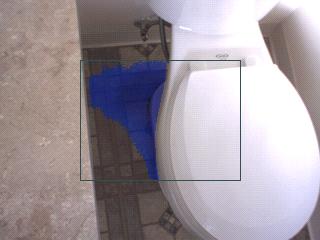
Here only the lowest temperature range is highlighted. This blue area is current moisture leaking under the flooring.
This moisture will cause deterioration and rot if not repaired.
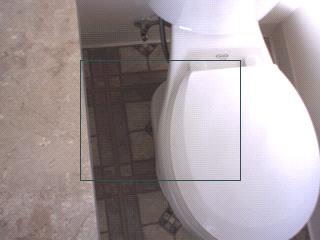
This is the same picture. Notice there is no visible indication of leakage. This is a typical situation that other inspectors might miss.
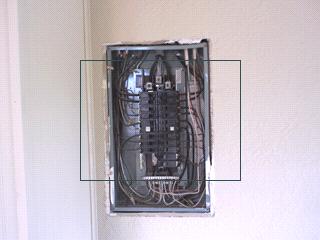
Here is a normal looking panel to a visual inspection.
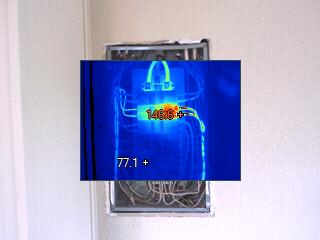
Infrared shows the over-loaded circuit on the newly installed wall heaters.
This was taken on a home inspection in McMinnville, Oregon.
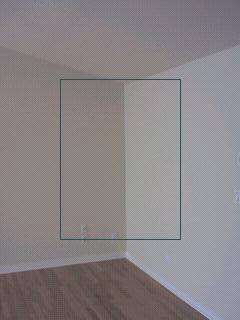
This picture shows a normal appearing wall on a home in Marion county.
This is the same wall w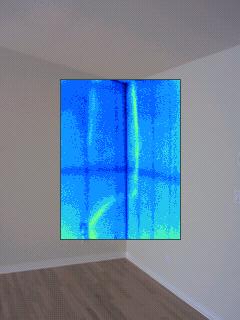 ith thermal imaging. This is an over-loaded and therefore hot wire in the wall. This is a very likely canidate for a fire.
ith thermal imaging. This is an over-loaded and therefore hot wire in the wall. This is a very likely canidate for a fire.
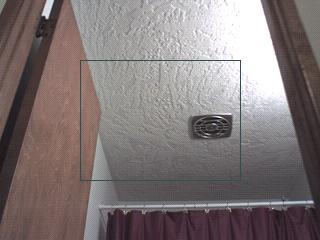
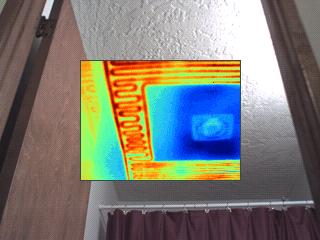
This is a bathroom ceiling in a 1970 vintage home with radiant heat in Yamhill county.
Here the radiant heating wires are clearly defined.

